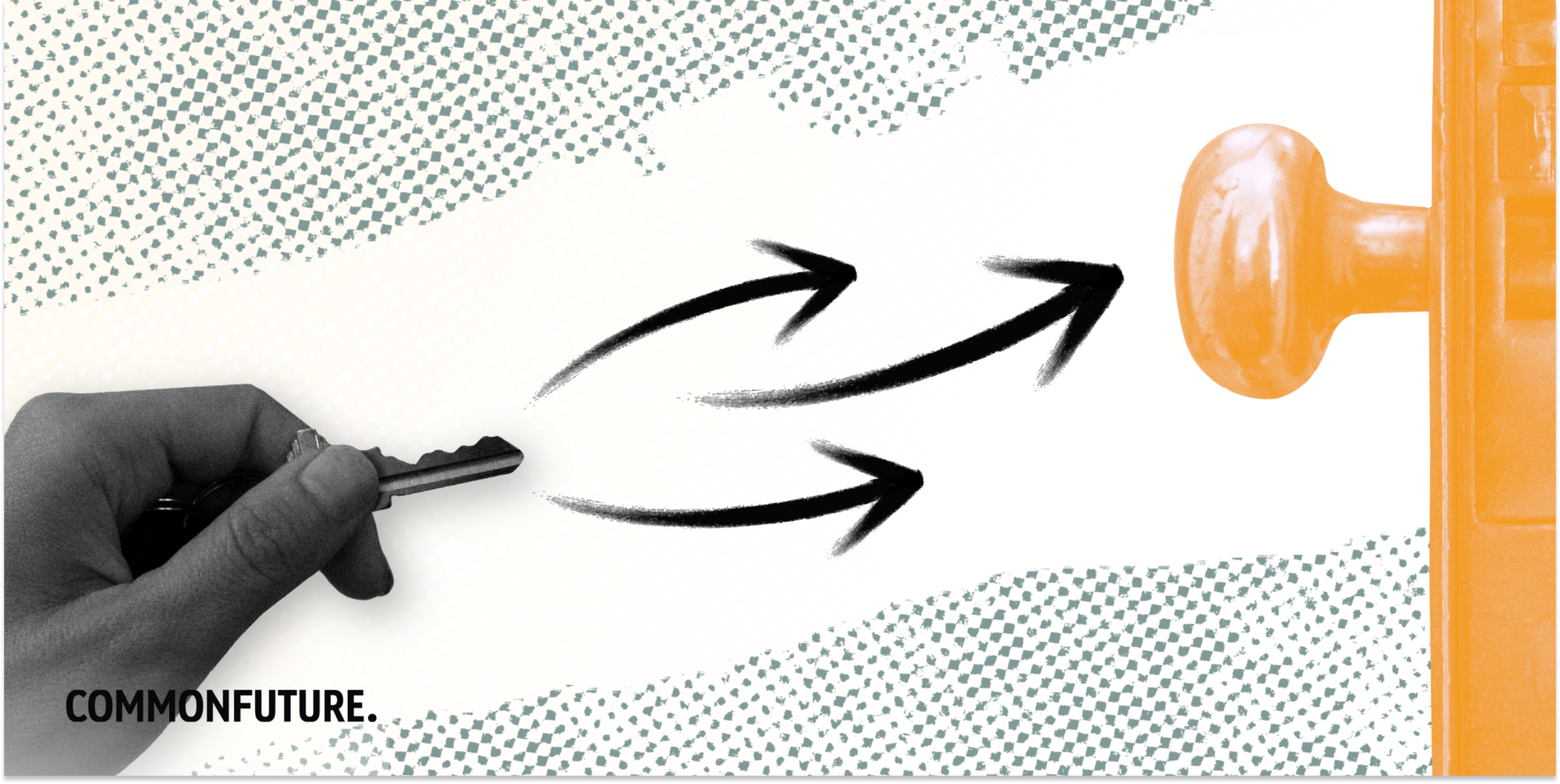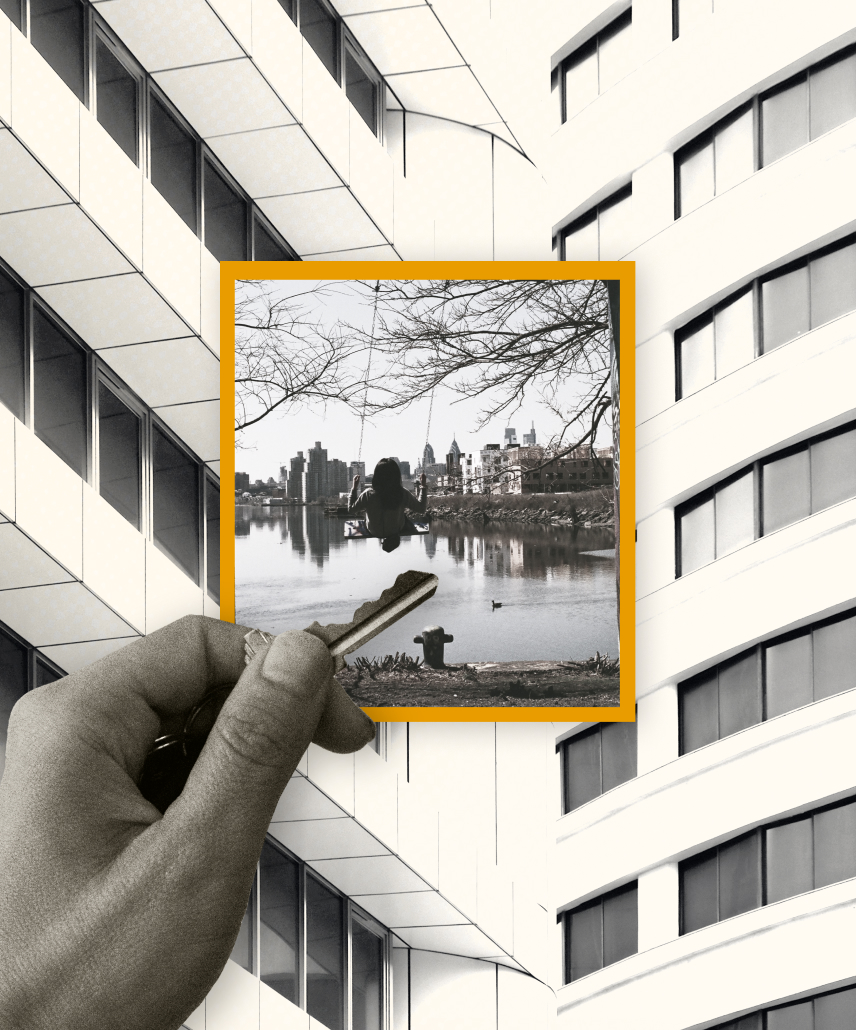Real Estate is Broken for BIPOC Folks. Here’s How We’re Stepping In.
Authors: Melonie Tharpe, Former Director Portfolio Initiatives


In February of 2022, one of our (now former) colleagues shared the story of how her grandmother’s home was taken through land theft—one of countless cases. In the U.S., the theft of land from Indigenous and Black communities has deep ties—ones that formed our economy today. Owning property means having power.
When we look at the racial wealth gap—both in the context of where wealth has traditionally been built in the U.S., and where capital and power have been stripped from BIPOC communities over generations—physical property plays a starring role. Owning real estate has been seen as part of the storied American dream, but it has also been one built for white Americans.
We also know that this exclusion of BIPOC property ownership, has been a feature—rather than a bug. Take for example, the growing gap between Black and white homeownership, or the devaluation of entire Black communities is accelerating, or how land theft has decimated Black smallholder farmers, and Black and Indigenous communities across the country—including homes stolen from our colleagues’ families.
In a country that pushes property ownership as a major tenant of building intergenerational wealth, the answer to closing the racial wealth gap must include ownership of places and spaces by BIPOC communities. Conservative think tanks like Heritage Foundation, Cato Institute, and the Hoover Institute often write about, and push, for the upholding of property rights—specifically that the ownership of property is what allows for liberty from state control.
They aren’t wrong. Studies have shown that property owners are more likely to vote than renters, giving property owners a leg up at the ballot box and the power it holds over elected officials. It is much harder to displace a landowner than a renter—especially in gentrifying areas. This means that landowners have more say over which community they live in and for how long. Generally, owning a piece of property allows you to make key decisions about its use, and those decisions bring power in themselves. Not to mention the direct power and influence property holders have on our systems. Real estate developers are in the top 15 lobbying industries shaping our politics and policies, contributing over $52M annually to campaigns.
Since the Civil War, 12 million acres of farmland have been stripped from Black farmers. Before that, a staggering 99% of indigenous-owned land, much of it farmland, was stolen through colonization, broken treaties, and the Indian Removal Act. Today, agriculture contributes $1.05T to our Gross Domestic Product (GDP) and the industry’s lobbyists are considered major power players. By the numbers, white people control the vast majority of property, despite making up only 60% of the population. Representing the remaining 40% of the population, BIPOC people control only 1.5% of all property. That is a big imbalance of power.
The Collective Effort to Shift Ownership to Build Power
With so much emphasis on the power of property within our system, it is no surprise that many of our friends and allies in the fight for economic justice have asked what might power in BIPOC communities look like if more property was in their hands? How might they grow wealth over generations?
These questions have manifested in various models to try and meet this seemingly insurmountable need—including support to increase the number of BIPOC developers, efforts to build back BIPOC farm land, one-off land reparations efforts, funders are banding together to make a dent in affordable housing with varying rates of success, and localized funds to help BIPOC entrepreneurs buy their buildings and access capital. There are other models trying to navigate or move the complex capital stack—, the layers of funding that go into commercial real estate projects—to better meet the needs of BIPOC and community developers such as the. East Bay Permanent Real Estate Cooperative crowdfunding campaign. Funders like RSF and Kataly Foundation have promoted integrated capital funds to their donors and investors. These nuanced approaches can really enable a project to succeed but they are not widespread or easily available in many communities.
Each of these models need and deserve more support to scale, but that need has not yet been met. BIPOC communities cannot build wealth or power without actually owning more land—and unfortunately land is in high demand these days.
Co-Creating Solutions: Modeling First-In Capital
Within all the work already being done in the space of BIPOC property ownership, we’ve identified a significant gap yet to be met: the need for first-in capital for small business and community owners in purchasing mixed-use and commercial real estate—property types being swallowed up by gentrification. When commercial real estate is replaced by luxury buildings and shopping centers, the small businesses and basic services they offer are displaced or forever pushed out.
Here are some of the largest gaps we’ve spotted in the community owned real estate sector where we think we can do something:
Acquisition Capital: Money—to move buildings off the market and away from for-profit developers—is still the hardest capital for most groups to find, per interviews we’ve conducted. These groups are spending time, scraping together acquisition funds per project, while powerful and deep-pocketed developers have immediate access to quick acquisition capital.
The Need For Fast-Moving, Flexible Funders: Funders who offer flexible repayment terms needed by community real estate projects are hard to find, and finding those that are also willing to move quickly is next to impossible. Though it can be much easier to find funders or Community Development Financial Institution (CDFI) support for in-progress works, neither offer capital when it is most needed, especially when big developers move in to swiftly take properties off the market—often against community wishes.
Defined Wealth-Building Strategies: Helping impact-focused funders and investors understand how to identify wealth building approaches in what can become a crowded and inauthentic space (just look at the sustainability space), is key to getting capital to the folks doing the real work in this space. We want to dive deep on approaches that can build wealth for multiple community members.
This combination of fast, first-in capital and community ownership models is where Common Future can move the needle. Leveraging the successful approach we modeled in our character based lending (CBL) pilot in 2020, we aim to leverage our relationships with funders to create an equitable model in this yet unsolved real estate puzzle.
In the coming months, we will be co-creating a model to show how community-owned real estate projects can thrive when they receive the right type of capital at the right time. We are working with a small group of practitioners with a variety of active community ownership models in communities across the country. Their insights into what is working and what type of early capital can best support these projects will shape Common Future’s pilot first-in capital fund.
Our fund will launch in 2023, allowing BIPOC led organizations to show funders and investors just what this type of capital can do to build wealth and power in BIPOC communities. A model funders can use to adjust their terms and provide projects and startup community real estate investment funds across the country exactly what they need.

